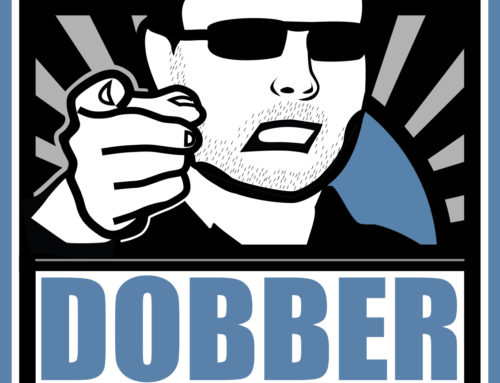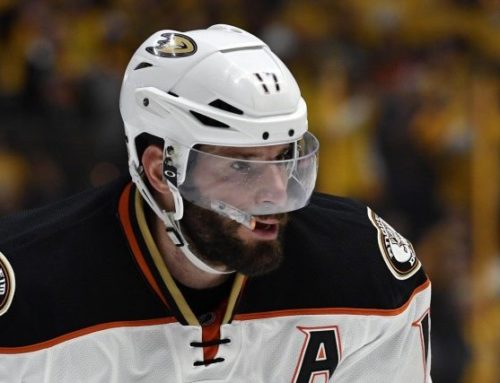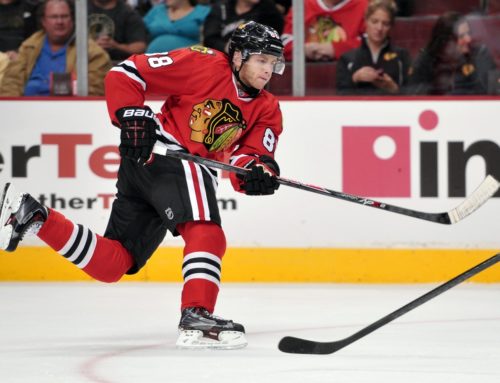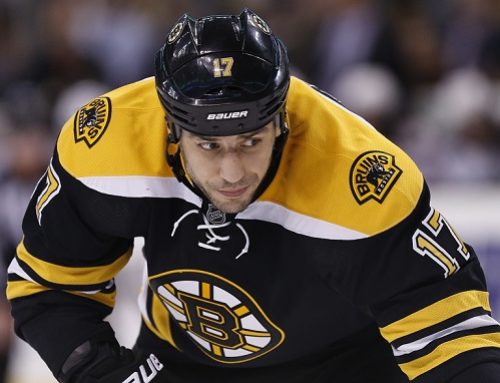
What to Watch For: An Introduction Pt.I
What to Watch For: Six Sources of Struggle Pt. II
What to Watch For: Mental Focus and Strength Pt. III
What to Watch For: The Unique Mental Blueprint Pt. IV
Many of you now have (or already had) a really good understanding of the numerous dynamics that come into play when analyzing a goaltender. With your continued rise in experience and games watched comes wisdom, which is why most of my discussion so far in this series has been about the different aspects that lie underneath the surface of what is normally exposed. But in order to bring closure to this series (on the heels of September’s arrival), the analysis now falls squarely on the exterior aspects of their game, otherwise known as the setting and atmosphere.
Setting is a simple term – it’s the collection of elements that make up your surroundings, usually via the five senses. That being said, it makes logical sense to start this process of extracting information by asking yourself the five vital questions we have all come to learn over the course of our lives; who, what, when, where and why. These simple words are anything but – and will open doors you never knew existed when it comes to analyzing the goaltending position.
Atmosphere can come off as a much murkier concept, yet it is still relatively easy to understand. Atmosphere is nothing more than the emotional elements added to setting. Specifically, how does the goalie in question react when certain elements of his setting are changed or manipulated both positively and negatively? In order to bring this paradigm to life, I go through each of the five W’s below using a different goalie in order to give you examples of this logic.
WHO is MIKE SMITH playing with this season and ultimately competing with for time between the pipes?
In his first full season as a member of Tampa Bay, Smitty finds Olaf Kolzig as his new teammate in net. Kolzig is on the fleeting tail-end of a wonderful career and has been employed to be a calming influence in the locker room and a guide for Smith’s development. Kolzig and Smith ultimately have far less pressures than that of other goalies. Kolzig is not a youngster trying to break out – he’s merely trying to provide a level of consistency and veteran leadership. Smith is labeled as the potential future franchise goalie and is being given every opportunity to grab the reigns. It’s a positive situation, so be sure to ask yourself how Smith’s setting would change if he had a different teammate in net.
The atmosphere is a very positive one – Smith and Kolzig are both excited to be in their current situation. They are going to display great chemistry as friends – Smith is a very coachable, energetic player with great raw talent and their similarities in size and stature will also lend to great camaraderie. They both have similar strengths when it comes to overall positioning and lateral movement, so together they can practice similar drills and look for similar things. There are no ‘labels’ in net right now – and with that lack of pressure comes a comfortable and calm situation for Tampa Bay. Other questions to ask are WHO his goalie coach is and WHO has been responsible for his development?
WHAT is VESA TOSKALA’s current value in YOUR league and WHAT are his strengths and weaknesses?
Toskala should be good for 60-65 games in Toronto this season and should play much more consistently under new head coach Ron Wilson. Considering Toskala wasn’t even in net on opening night last season, you have to believe he’s going to come out prepared and ready to play at the top of his game. Of course, a lot of his play depends on the defensemen in front of him, so Toskala’s strengths must be on display right away.
His strengths come from the atmosphere he creates around himself. He employs an amazingly cool, calm and collected demeanor in net. He’s agile, with very quick, sharp reflexes down low. He can scramble with the best in the league and does a tremendous job of taking away space for being a smaller goalie. His rebound control is excellent and his game management and stick handling are impressive for a goalie with little playoff experience. I would say Toskala’s main weakness is that he plays deep in his crease and is often beat up high or underneath the elbows as he attempts to push out to the top of his crease.
What is so impressive about Toskala’s atmosphere? It’s his innate ability to control it. No matter what bad goal was just allowed, Toskala can clear up the negative vibes around him and focus on the puck. We all know about the tragic goal he allowed last season – but did you know he failed to allow another goal that entire game? Although there will always be a level of uncertainty surrounding his game, Toskala has the mental toughness needed to play well in Toronto.
WHERE does TUUKKA RASK fall right now in Boston and WHERE does he make the most sense fitting in?
Rask is a future phenom goalie, but with Tim Thomas the apparent #1 guy in the final year of his contract, and Manny Fernandez returning from injury (also in the final year of his contract) it looks like there’s no urgency to rush Rask. Fernandez certainly deserves the chance to re-gain his starting role due to injuries and Thomas is poised to have another excellent season and the front office seems to feel the same way.
The writing is on the wall for Rask – another heavy workload in the AHL. Of course there will be opportunities that come with injury or bad play, but Rask makes the most sense playing a full successful season in the A. He’s labeled as the future goalie of the franchise, so giving him the experiences of playing 70+ games really makes the most sense for Boston ownership. Rushing him into the lineup and asking him to perform right now is unnecessary unless Fernandez and Thomas fall off the face of the planet.
Sure enough, there’s a tremendous amount of positive atmosphere surrounding this kid. He has a ton of raw, Finnish superstar talent and although he may not have all the experience in the world, what he has done so far is nothing short of remarkable. The negative atmosphere could potentially come with the Bruins trying to force an issue. Let time run its course and don’t allot resources in areas where they are not needed and Rask will develop his total game over the next three to four seasons. Finnish goaltenders are always works in progress (a topic I will discuss next week).
WHEN does ONDREJ PAVELEC finally get his chance as an Atlanta Thrasher?
The confident, highly-talented Czech goalie will almost certainly get another chance to prove his worth at the NHL level again this season, but whether or not he is able to display any type of consistency remains to be seen. Considering he has gone from Cape Breton in the QMJHL to a seven-game stint Thrashers in just a few seasons, there’s no reason to rush him into the lineup.
Many of Dobber Nation believe that injury will force Pavelec into the lineup, so how he’s mentally prepared for the next stint will be the most important factor in whether or not he is worthy of picking up. Truth be told, Pavelec is probably the most sought-after free agent goalie on lists, as he will only be drafted in very deep one-year leagues.
The atmosphere with Pavelec could be seen in many different ways, but I’m led to believe Pavelec is going to struggle for a few more seasons. He’s still very young and inexperienced and has only played one full season in the AHL. His two seasons in the Q were successful, but relatively un-challenging. Pavelec must focus hard and be ready for anything – his mental strength will become the ultimate focus. If he gets too psyched out, he will struggle. If he can stay calm and focus on movement, he will make all the necessary saves and show consistency needed to stay in the lineup.
WHY should I honestly ask these kinds of questions and WHY does it really matter in the long run?
We all seek an edge on our fantasy opponents and all of our opponents have certain strengths and weaknesses. More often than not, your competitor either excels at making day-to-day goalie decisions or he’s horrible at it and gets extremely lucky. Believe me when I say that the latter is one of the most frustrating aspects of playing fantasy hockey – luck is just the way she goes sometimes.
Ultimately it comes down to dedication and committing some time to being informed. Taking some time every day to better comprehend where your goaltending tandem lies will really help even out the disparity between pure luck and downright horrible decisions. It all goes back to the first part of this series and the concept of Situational Awareness. Having a better understanding of your TOTAL surroundings not only enlightens you, it leads to better decision making. The irony of fantasy hockey is that sometimes you are forced to make decisions just as quickly as real goalies do – you must be fast and decisive and any type of hesitation could result in bitter, frustrating failure.
So here are the philosophical components to take with you and add to your arsenal of fantasy hockey genius. Keep it simple – be situationally aware on a daily basis – take into account all aspects of the position we have discussed – don’t forget the importance of emotions and mental toughness and remember that history plays an important role in the current and future success of pro and minor-league goaltenders! I hope that this series has been educational on both a very wide scope (in the realm of goaltending) as well as narrowly focused scope (towards your own fantasy hockey strengths). Please don’t hesitate to ask questions!





 FLA
FLA CHI
CHI NYR
NYR PIT
PIT L.A
L.A COL
COL CAR
CAR UTA
UTA SEA
SEA
 NYI
NYI TOR
TOR VAN
VAN MTL
MTL
